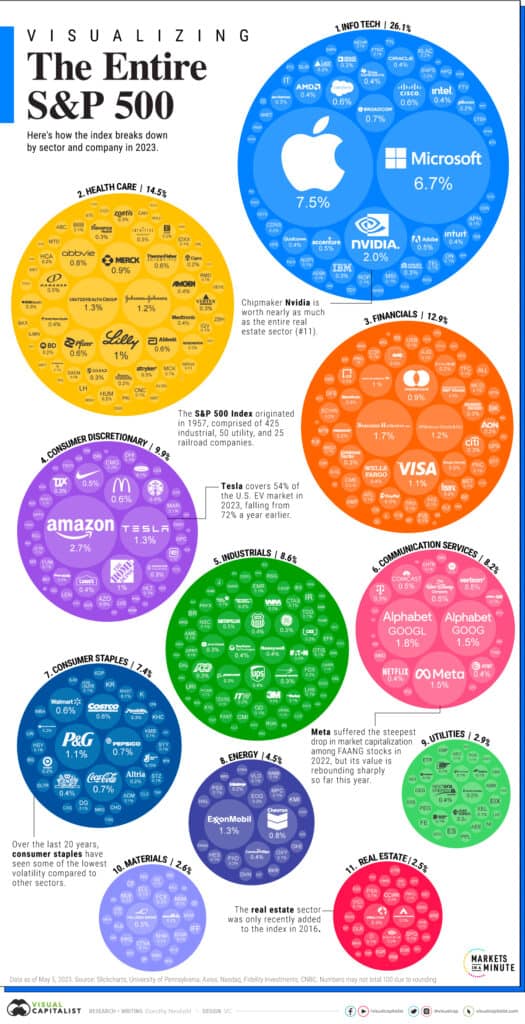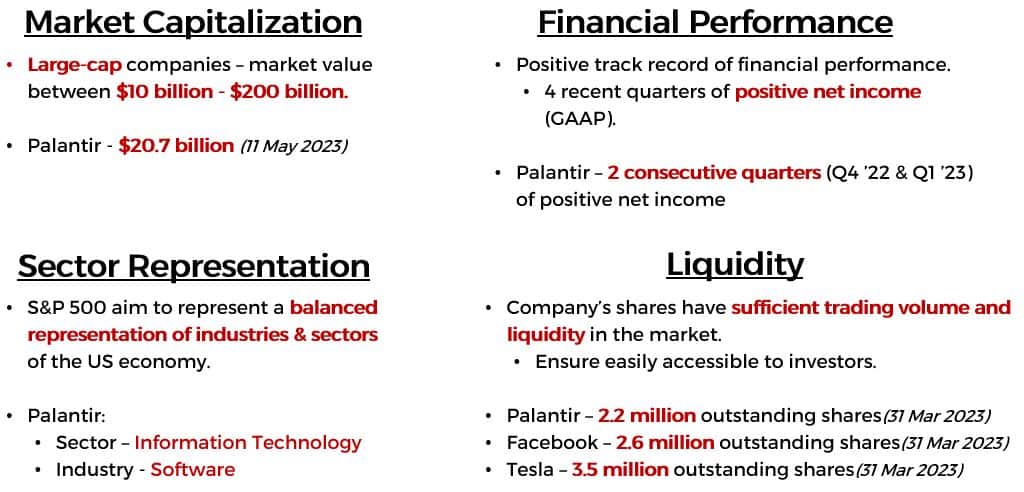When it comes to measuring the pulse of the U.S. stock market, one name stands out: the S&P 500. As a benchmark index, the S&P 500 serves as a reliable indicator of the overall health and performance of the U.S. equities market.
In this article, we will delve into what exactly the S&P 500 is, its significance in the stock market, and the criteria companies must meet to be included in this prestigious index.
WHAT IS THE S&P 500?
The S&P 500, short for Standard & Poor’s 500 Index, is a market-capitalization-weighted index that tracks the performance of 500 large-cap U.S. companies listed on major stock exchanges. These companies represent a significant portion of the overall market capitalization of the U.S. stock market.
The index was first introduced in 1957 by Standard & Poor’s, a leading global provider of financial market intelligence.
IMPORTANCE OF THE S&P 500 AS A BENCHMARK
1. Market Representation: The S&P 500 is often regarded as a reliable barometer of the broader U.S. stock market’s performance, capturing approximately 80% coverage of available market capitalization. It represents a diverse range of industries, including technology, finance, healthcare, consumer goods, and more, providing a comprehensive snapshot of the U.S. economy.
Displayed below is a graphic illustrating the 11 sectors encompassed within the S&P 500:

Graphic source: visualcapitalist.com
2. Investor Confidence: As one of the most widely followed benchmarks, the S&P 500 serves as a gauge of investor sentiment and market confidence. It is frequently used as a reference point by portfolio managers, analysts, and individual investors to assess their investment performance relative to the overall market.
3. Investment Vehicle: Many investment products, such as index funds and exchange-traded funds (ETFs), track the performance of the S&P 500. These investment vehicles allow investors to gain exposure to a broad range of U.S. stocks and benefit from the potential growth of the overall market.
CRITERIA FOR INCLUSION IN THE S&P 500
To be included in the S&P 500, a company must meet the following criteria:

Example of inclusion criteria for Palantir
1. Market Capitalization: The company should have a minimum market capitalization of approximately $12 billion or more. However, the threshold may vary based on market conditions.
2. Financial Viability: Companies being considered for inclusion in the S&P 500 must demonstrate a track record of positive earnings over the most recent four quarters, as determined by Generally Accepted Accounting Principles (GAAP).
3. Sector Representation: The index aims to maintain a balance across various sectors of the economy. Therefore, companies from different sectors are included to ensure diversification within the index.
4. Liquidity: Companies should have a certain level of liquidity, ensuring that their shares are actively traded on the exchange and can be easily bought or sold without significant price impact.
In addition to the 4 points mentioned, the company’s stock must be listed on a major U.S. stock exchange, such as the New York Stock Exchange (NYSE) or the NASDAQ.
CONCLUSION
The S&P 500 plays a vital role in the financial markets, serving as a reliable benchmark for assessing the performance of the U.S. stock market. It provides investors with valuable insights into market trends, investor sentiment, and the overall health of the economy.
By understanding the criteria for inclusion in the index, investors can gain a deeper appreciation for the companies that contribute to this important measure of market performance. Whether as a reference point for investment portfolios or a gauge of market confidence, the S&P 500 remains a cornerstone in the world of finance.
We have also discussed Palantir and its potential inclusion in the S&P 500 index in this deep dive article! Click to explore further details!
If you have always wanted to learn how to invest and grow your money by evaluating other potential companies, join us in our upcoming Masterclass where you will learn from Cayden on how to:
- Generate 3 Sources of Passive Income even if you know Nothing about investing.
- Invest with minimal capital.
- Create a Cash Dispensing Machine to replace your existing salary.
DISCLOSURE
The above article is for educational purposes only. Under no circumstances does any information provided in the article represent a recommendation to buy, sell or hold any stocks/asset. In no event shall ViA or any Author be liable to any viewers, guests or third party for any damages of any kind arising out of the use of any content shared here including, without limitation, use of such content outside of its intended purpose of investor education, and any investment losses, lost profits, lost opportunity, special, incidental, indirect, consequential or punitive damages resulting from such unintended use.











